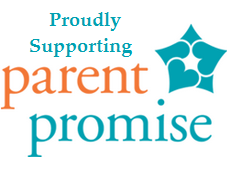Selling a property with fire damage can feel like an uphill battle, but with the right strategies, you can still get a fair price while minimizing stress. Whether you’re dealing with minor cosmetic issues or significant structural damage, the key to maximizing your property’s value lies in careful planning, transparency, and targeting the right buyers. Here’s a comprehensive guide to help you make the most of the process.
1. Understand the Extent of the Damage
Before listing your home for sale, it’s essential to have a full understanding of the fire damage. Schedule a professional inspection to identify:
- Structural issues: Damage to the foundation, walls, roof, or other critical components.
- Smoke and soot residue: Lingering stains and odors that can affect air quality.
- Water damage: Issues caused by firefighting efforts, such as mold or rot.
Having a clear picture of the damage will help you decide whether to repair the home or sell it as-is, which can significantly impact your bottom line.
2. Decide Between Repairs and Selling As-Is
One of the most important decisions when selling a fire-damaged house is whether to make repairs or sell it in its current condition. Both options have pros and cons, and the choice largely depends on your financial situation, timeline, and the extent of the damage.
Making Repairs:
- Pros: Increases the home’s market value and makes it more appealing to traditional buyers.
- Cons: Repairs can be costly and time-consuming, especially if the damage is extensive.
Selling As-Is:
- Pros: Saves time and money on repairs, and can appeal to cash buyers or investors who specialize in distressed properties.
- Cons: The home may sell for a lower price, but this can be offset by the reduced costs of repairs.
If you’re looking to sell quickly or avoid repair expenses, selling the property as-is might be the better option.
3. Get an Accurate Appraisal
After a fire, the value of your property may decrease, but that doesn’t mean it’s worthless. An experienced appraiser or real estate agent can help determine your home’s post-fire value based on:
- The extent of the fire damage.
- The current condition of the property.
- Market trends in your area.
Understanding your home’s value will allow you to price it competitively, which is crucial for attracting buyers and maximizing your return.
4. Highlight the Property’s Potential
While fire damage may be the most noticeable feature of your home, it’s not the only one that matters. When marketing your property, emphasize its potential and unique selling points, such as:
- The lot size or location: Is your home in a desirable neighborhood or close to amenities?
- Unaffected features: Highlight areas of the home that weren’t damaged by the fire, such as a remodeled kitchen or large backyard.
- Investment opportunities: For buyers interested in flipping or renovating, the damage could be an opportunity to customize the property to their liking.
5. Be Transparent with Buyers
Honesty is critical when selling a fire-damaged house. Disclose the history of the fire, the extent of the damage, and any repairs you’ve made. Buyers will likely conduct their own inspections, so being upfront about the property’s condition can build trust and prevent legal complications.
Provide documents such as:
- Fire department reports.
- Inspection results.
- Receipts for any completed repairs.
Transparency shows buyers that you’re serious and helps set realistic expectations.
6. Target the Right Buyers
Traditional homebuyers may be hesitant to purchase a fire-damaged house, but there are specific groups who specialize in these types of properties, such as:
- Real estate investors: They often look for opportunities to renovate and resell at a profit.
- Cash buyers: These buyers are typically less concerned about the property’s condition and can close deals quickly.
- House-flipping companies: They specialize in purchasing distressed properties, making them ideal if you want a fast and hassle-free sale.
Targeting these buyers can help you sell the property more quickly and at a reasonable price.
7. Consider Selling to a Cash Buyer
If speed and simplicity are your priorities, selling to a cash buyer may be the best option. Cash buyers are often willing to purchase properties as-is, even if they’ve suffered significant fire damage. This eliminates the need for repairs, inspections, and financing contingencies, making the transaction much faster and less stressful.
8. Market Effectively
When selling a fire-damaged house, your marketing strategy should focus on attracting the right audience. Use high-quality photos and honest descriptions that highlight both the damage and the property’s potential. If you’re selling as-is, clearly state that in your listing to set expectations.
Additionally, consider listing the property on platforms that specialize in distressed or investment properties, as these are more likely to attract serious buyers.
9. Explore Insurance Options
If your fire insurance policy covers repairs, you may be able to use the payout to restore some of the property’s value before selling. Alternatively, the insurance money can help offset the cost of selling as-is. Be sure to check the terms of your policy and file a claim promptly.
Selling a fire-damaged property doesn’t have to be a daunting process. By understanding the damage, pricing the home competitively, and targeting the right buyers, you can maximize its value and move forward with confidence.
For a quick and straightforward sale, consider working with cash buyers or real estate investors who specialize in selling fire damaged house. These buyers can often close deals quickly, helping you avoid the stress and expense of repairs.
With the right approach, you can turn a challenging situation into an opportunity to start fresh and make the most of your property.


